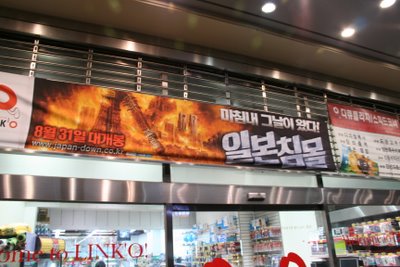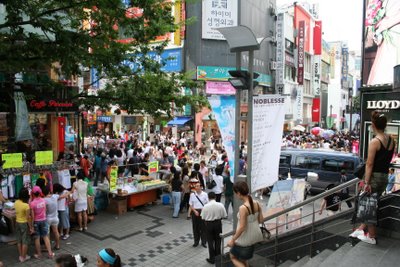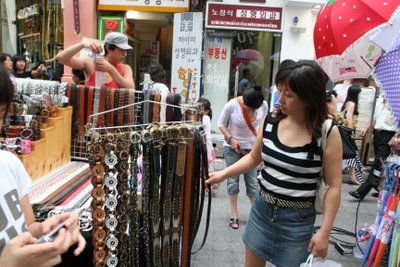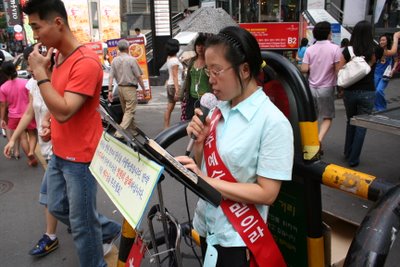I've decided to start making an effort to learn hanja, or Chinese characters as they're used in Korean.
For a long time I stubbornly refused to study them. After all, my greatest weaknesses in Korean are speaking and understanding what people say to me, and it's not obvious how studying Chinese characters will help me with that. Also - quite unlike Japan - in Korea there's not really a
need to learn Chinese characters to be able to function well in the language. Most books and magazines omit them completely. Sometimes it seems they're reserved for special occasions. For example, the name of the author on a book cover might be written in
hanja, or a business card might be all
hanja.
But recently I discovered Lee Young-hee's
Learn Hanja the Fun Way in a bookstore, and I decided to go for it. First of all, learning to write the characters will give me a head start when I learn Japanese and Chinese, though I know that the Japanese and Chinese use and pronounce characters differently (not to mention the several hundred characters that the PRC decided to alter a few decades ago). Also, as I learn the characters I'll review and learn high-level Korean vocabulary. Finally, I genuinely feel like I'm learning a new skill - but I need to find someone who will check and correct me on my handwriting. (I'm assuming that if I learn to write Korean
hanja well, that at least will carry over to Chinese and Japanese.)
Classical Chinese has about the same relationship to Korean that Latin and Greek do to English. Take the syllable
dent. Through words like
dentist, dental, dental floss, dentures, and
dentistry, we can see that
dent means "tooth". But we wouldn't use it alone to mean "tooth"; for that we'd use the native English word. (The Korean word for "tooth" is 이 or
ee; the Chinese-derived equivalent of
dent is 치 or
chee.)
Now imagine that, although we usually wrote Latin and Greek-derived words in our own alphabet, it was also possible to write them in a special writing system quite distinct from our alphabet. And most educated people knew the symbol for
dent, even though they usually just spelled it out in English letters.
To write
dentist, you would usually just use English letters, but another option would be to pair the
dent symbol with the
ist symbol, also used in words like
pianist, taxidermist, scientist, and so on. So you would have 2 options to write
dentist: you could spell it out d-e-n-t-i-s-t, or you could write it in 2 characters: the
dent character and the
ist character. But for a word like
tooth, you would have no choice but to spell it t-o-o-t-h.
That is how Chinese characters work in Korean.
I've noticed a few
hanja-based cross-linguistic puns. These days lots of Korean companies advertise "well-being," or healthy, foods. No effort is made to translate "well-being" into Korean; instead they've just adapted the English words and write it 웰빙 ("wel-beeng"). The other day I saw a street stall where they were selling healthy iced snack foods. The slogan "well-being" was prominent, but the "being" part of it was replaced by the Chinese character for ice. The Korean pronounciation for this character is "beeng".
 This poster is for a movie called (something like) "The Sinking of Japan". It's a Japanese disaster movie that's been described as kind of a "Japanese The Day After Tomorrow." Basically Japan sinks into the ocean due to some natural disaster.
This poster is for a movie called (something like) "The Sinking of Japan". It's a Japanese disaster movie that's been described as kind of a "Japanese The Day After Tomorrow." Basically Japan sinks into the ocean due to some natural disaster.











